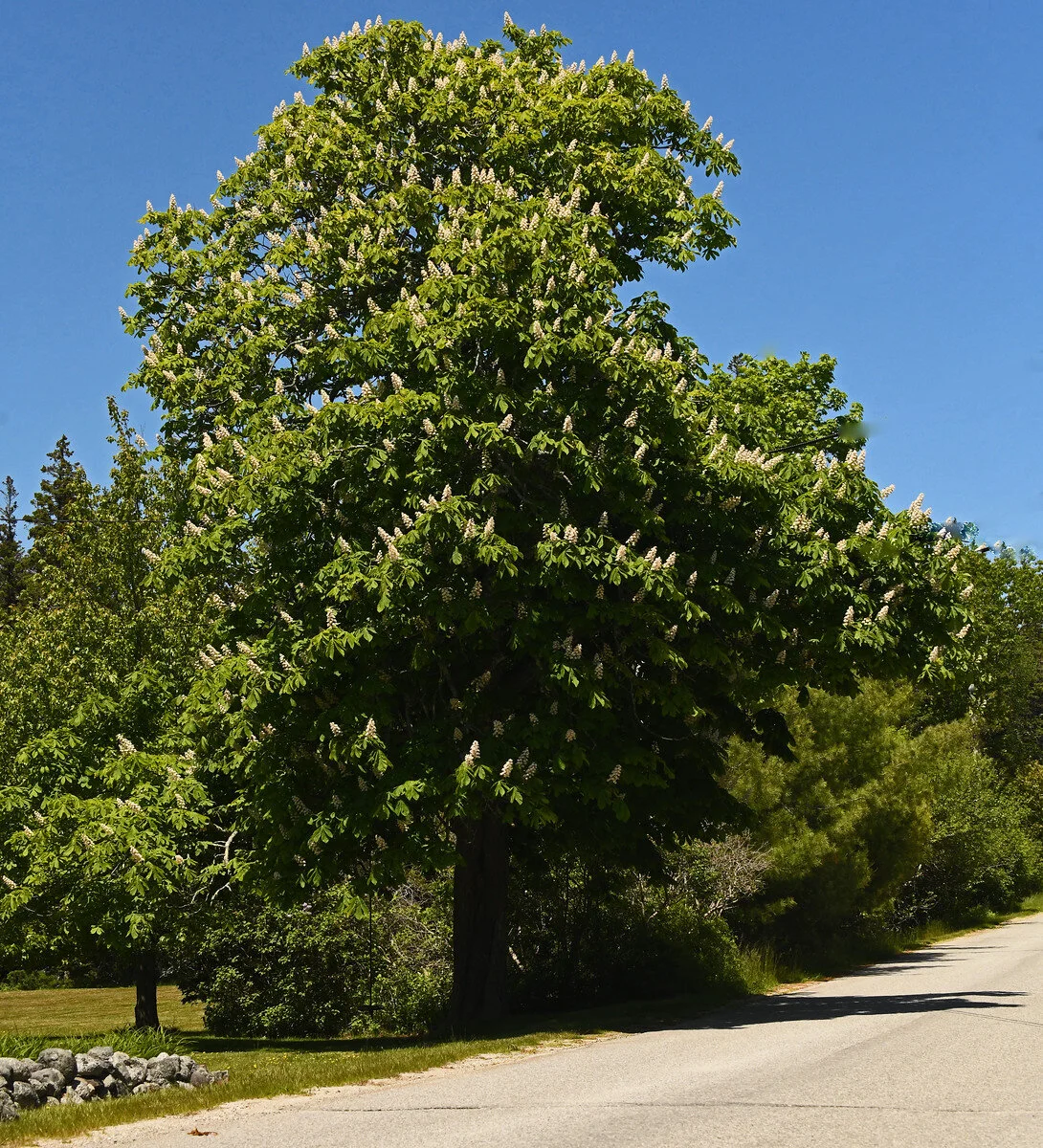For those who like their winter trees gnarly and scary, here’s one of our favorite Brooklin Horse Chestnut Trees as it appeared yesterday. It apparently is ready to reach out and snatch a child.
In the summer, however, it’s an inviting temple of lush palmate leaves, flowered candelabras, and vibrant conker shells:
This unusual species of tree (Aesculus hippocastanum) is native to the Balkans. They were imported into England in 1616, primarily for landscape use, and then exported to the United States for similar purposes.
The tree was named a chestnut tree because of similarities to the European Sweet Chestnut Tree (Castanea sativa); but, it’s not related to that tree. It also was named a “Horse” Chestnut Tree, but it’s certainly not related to any horse. Why the “Horse” nom de bloom? There are two theories.
The primary theory is that, in days of yore, the Turks fed the tree’s conkers to their sick horses to cure the animals’ coughing. The other theory is that, when the tree’s leaves fall, they leave scars on their twigs that look exactly like little horseshoes, complete with nail holes. Check out your nearest Horse Chestnut Tree. (Brooklin, Maine)

